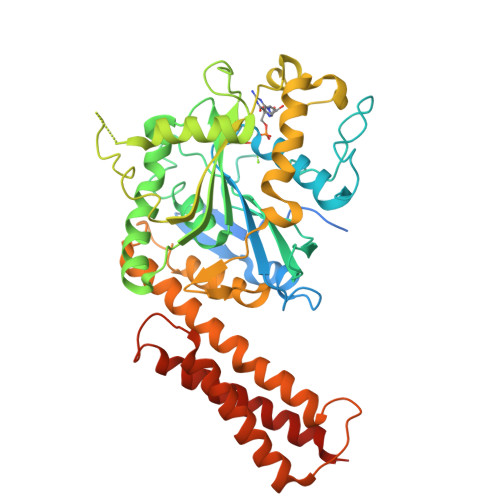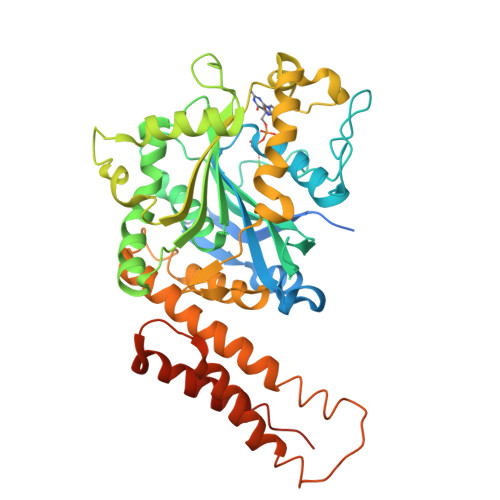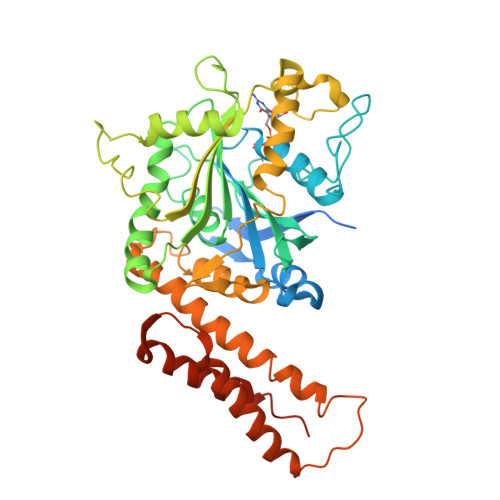Structures of the atlastin GTPase provide insight into homotypic fusion of endoplasmic reticulum membranes.
Bian, X., Klemm, R.W., Liu, T.Y., Zhang, M., Sun, S., Sui, X., Liu, X., Rapoport, T.A., Hu, J.(2011) Proc Natl Acad Sci U S A 108: 3976-3981
- PubMed: 21368113
- DOI: https://doi.org/10.1073/pnas.1101643108
- Primary Citation of Related Structures:
3QNU, 3QOF - PubMed Abstract:
The generation of the tubular network of the endoplasmic reticulum (ER) requires homotypic membrane fusion that is mediated by the dynamin-like, membrane-bound GTPase atlastin (ATL). Here, we have determined crystal structures of the cytosolic segment of human ATL1, which give insight into the mechanism of membrane fusion. The structures reveal a GTPase domain and athree-helix bundle, connected by a linker region. One structure corresponds to a prefusion state, in which ATL molecules in apposing membranes interact through their GTPase domains to form a dimer with the nucleotides bound at the interface. The other structure corresponds to a postfusion state generated after GTP hydrolysis and phosphate release. Compared with the prefusion structure, the three-helix bundles of the two ATL molecules undergo a major conformational change relative to the GTPase domains, which could pull the membranes together. The proposed fusion mechanism is supported by biochemical experiments and fusion assays with wild-type and mutant full-length Drosophila ATL. These experiments also show that membrane fusion is facilitated by the C-terminal cytosolic tails following the two transmembrane segments. Finally, our results show that mutations in ATL1 causing hereditary spastic paraplegia compromise homotypic ER fusion.
Organizational Affiliation:
Department of Genetics and Cell Biology, College of Life Sciences, and Tianjin Key Laboratory of Protein Sciences, Nankai University, Tianjin 300071, China.























